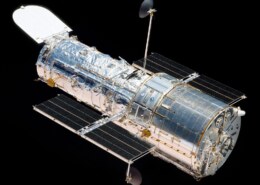As a computer science graduate specializing in artificial intelligence (AI), I see significant potential for AI and machine learning (ML) to enhance climate change models and improve predictions of environmental impacts. Enhanced Climate Modeling: AI can process vast amounts of climate data more effRead more
As a computer science graduate specializing in artificial intelligence (AI), I see significant potential for AI and machine learning (ML) to enhance climate change models and improve predictions of environmental impacts.
Enhanced Climate Modeling: AI can process vast amounts of climate data more efficiently than traditional methods. ML algorithms can identify patterns and trends in historical climate data, improving the accuracy of climate models. For instance, deep learning techniques have been used to refine global climate models by integrating diverse data sources, such as satellite imagery and sensor data (TechFormist) .
Predictive Analytics: ML models can predict future climate scenarios by analyzing current data and past trends. These models can simulate the potential impacts of different variables, such as greenhouse gas emissions, deforestation, and industrial activities. This helps in understanding the long-term effects of climate policies and interventions.
Real-time Monitoring and Alerts: AI-powered systems can monitor environmental parameters in real-time, providing early warnings for extreme weather events like hurricanes, floods, and wildfires. For example, Google’s AI program for flood prediction has shown promising results in predicting the locations and severity of floods .
Resource Optimization: AI can optimize the use of natural resources by predicting and managing energy consumption, water usage, and agricultural practices. This can lead to more sustainable practices and reduced environmental impact.
To delve deeper, explore resources like the Intergovernmental Panel on Climate Change (IPCC) reports, and publications from the European Space Agency. Engaging in online courses on platforms like Coursera and edX can also provide comprehensive insights into applying AI in environmental science.
See less


Soil fertility depletion Soil fertility depletion means that the soil loses its ability to grow healthy plants. This happens because of overuse, poor farming practices, and lack of nutrients. Farmers face big problems when their soil is not fertile. Biofertilizers could help solve this problem. BiofRead more
Soil fertility depletion
Soil fertility depletion means that the soil loses its ability to grow healthy plants. This happens because of overuse, poor farming practices, and lack of nutrients. Farmers face big problems when their soil is not fertile.
Biofertilizers could help solve this problem. Biofertilizers are natural fertilizers made from living organisms, like bacteria and fungi. These tiny organisms help plants grow by giving them important nutrients like nitrogen and phosphorus. They also improve the soil’s health and make it more fertile over time.
However, biofertilizers are not the only solution. Farmers can use other methods to improve soil fertility too. One way is crop rotation, which means planting different crops in the same field each season. This helps keep the soil rich in nutrients. Another way is adding organic matter, like compost or manure, to the soil. This boosts its nutrient levels and improves its texture.
Additionally, using cover crops, such as clover or rye, can protect the soil from erosion and add more nutrients when they decompose. Proper irrigation and reducing the use of chemical fertilizers also help maintain soil health.
Biofertilizers are a great option, but using a combination of methods can be the best way to keep soil fertile.
See less